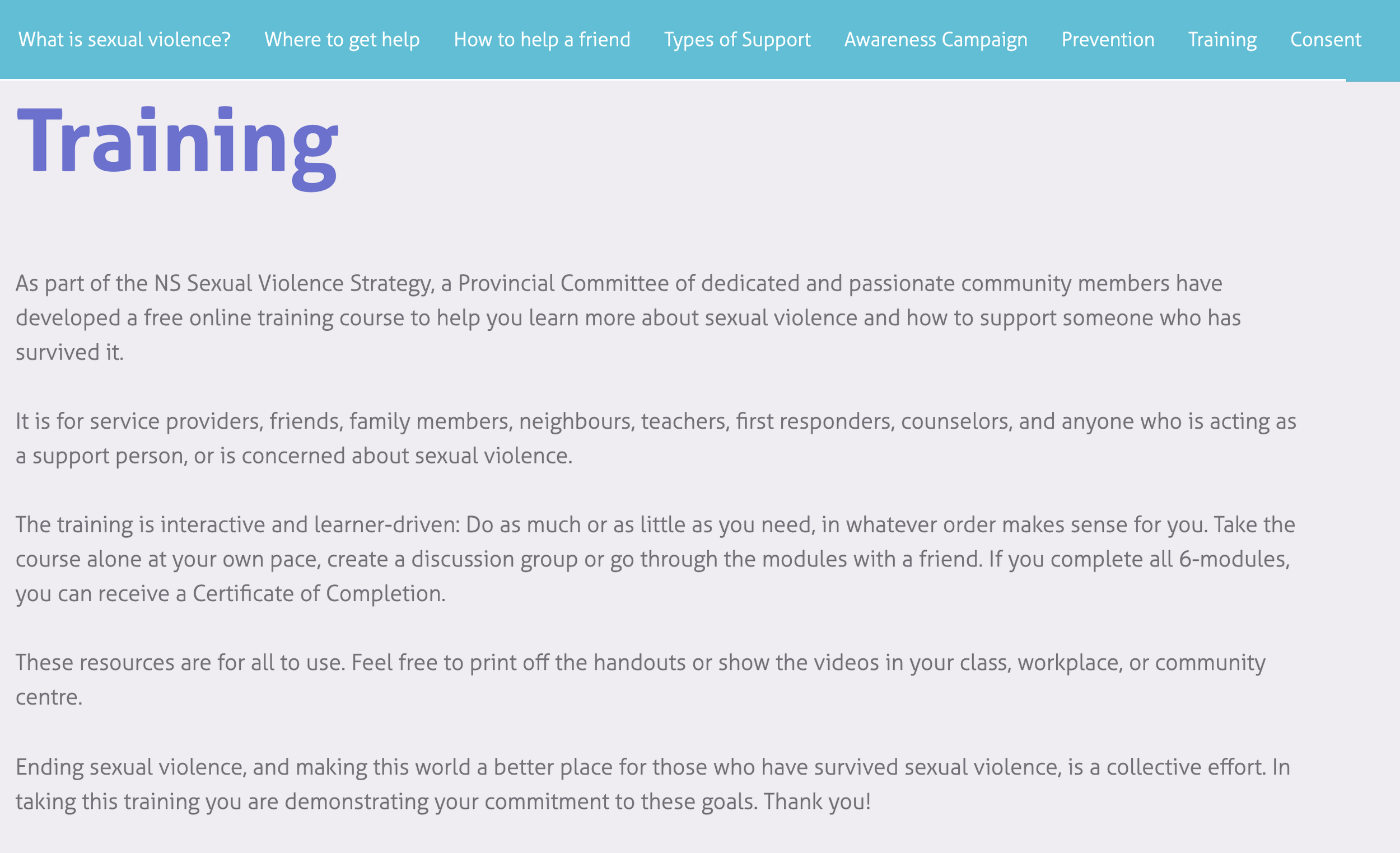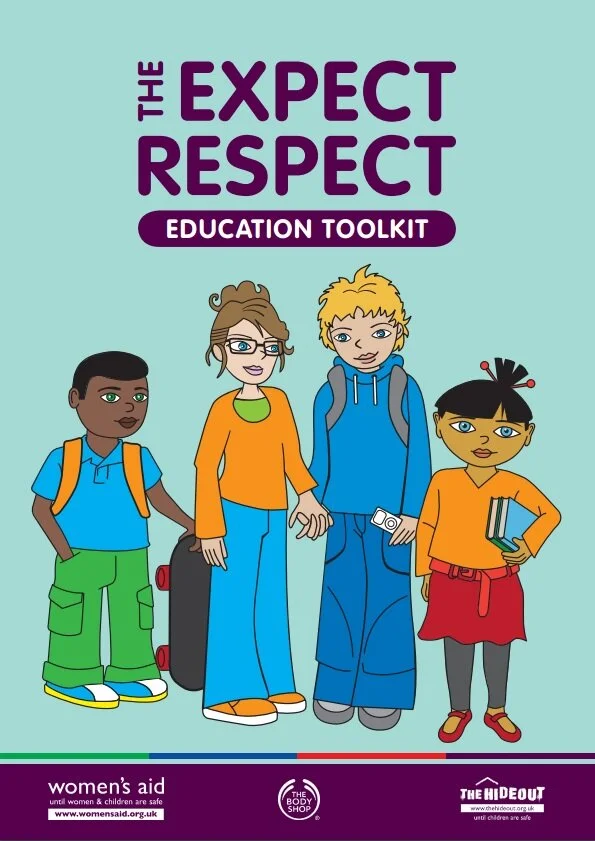Framework for Action to Prevent and Address Violence Against Indigenous Women and Girls
Infographic on Family Violence in Canada
Nova Scotia Domestic Violence Action Plan
Intimate Partner Violence in African Nova Scotian Communities (NS DV Resource Centre)
Recommendations to Address Sexual Violence on University Campuses in Nova Scotia
Free Online Training: Supporting Survivors of Sexual Violence
Women’s Law Project Policy Brief: Advocacy to Improve Police Response to Sex Crimes
NS Human Rights Commission Resources on Sexual Harassment
A statistical profile of intimate partner violence
Intimate partner violence or domestic violence is harmful behaviour that happens in our homes, in our families, and in our intimate relationships. Domestic violence is deliberate and purposeful violence, abuse, and intimidation perpetrated by one person against another in an intimate relationship. It occurs between two persons where one exercises power over the other, causing fear, physical, and/or psychological harm. It may be a single act or a series of acts forming a pattern of abuse.
Domestic violence can occur in any relationship, however, women are primarily the victims and men are primarily the perpetrators. Children and young people may experience harm by being exposed to violence in adult relationships, being the direct victims of violence, or a combination of the two.
Domestic violence is also commonly called relationship/dating violence, intimate partner violence, and gender-based violence. It happens in both heterosexual and same-sex relationships. It can affect transgender and intersex populations as well. (Domestic Violence Prevention Committee Report, 2009)
According to Statistics Canada (2006) just over one third (36%) of spousal assaults and only 8% of sexual assaults are reported to the police. Therefore the number of police reported incidents does not reflect the level of violence against women in a community.
Lunenburg County: Spousal abuse experienced by women in Lunenburg County (conservatively estimated) during the 2009/2010 fiscal year was 1300 or 6% of the total population of women over the age of 15 (Atkinson, 2010).
In Lunenburg County, informal statistics gathered by the RCMP and Bridgewater Police Services regarding violence against women and girls, report a total of 181 assaults, 97 sexual assaults and 2 homicides between January 2007 and June 2009. Note that these numbers are considered to be low estimates. (Second Story Women’s Centre, 2009)
Nova Scotia has the highest rates of sexual assault in the country, at a rate of 40 per 1,000 in the population aged 15 and over (compared to an average of 21 per 1000 for all of Canada) with females comprising approximately 85% of all sexual assault victims (Sexual Assault in Nova Scotia: A Statistical Survey, 2009)
60% of sexual abuse/assault victims are under the age of 17 and alcohol is often a factor (SexualAssault.ca) and in all cases involving girls between the ages of 12-15 years in Nova Scotia (Avalon Sexual Assault Center).
According to the 2004 General Social Survey, 11% of Canadian women reported being a victim of criminal harassment (stalking) in the five year period from 1999-2004. This represents more that 1.4 million females 15 years of age and older. Women in Nova Scotia have the 2nd highest rate (of stalking) in Canada at 12%.
In 2009, a one-day snap shot of 402 adult male offender of Nova Scotia correctional facilities revealed just under one third were in custody for domestic violence including 100 offenders who were consider to be at high risk of lethality (Nova Scotia Status of Women).
In Canada a woman or child is sexually assaulted once each minute (Canadian Research Institute for the Advancement of Women, 1998).
Violence against women is the most frequent cause of injury in Canada. (Greaves, et al, 2006)
Almost 50% of Canadian women experience one at least one episode of domestic violence in their lifetime. (Johnson 2005)
From 2000-2006 the death toll of Canadian soldiers and police officers totalled 101, while more than 500 women - nearly five times as many - were shot, stabbed, strangled, or beaten to death by the intimate males in their lives. (Vallee 2007, 29)
Alcohol dependency has been found to be up to 15 times higher for women impacted by violence than in the general public.
As many as 40% of female injuries are treated in emergency rooms as a result of partner abuse, but only 5% of these women are properly identified as being abused.
80% of children living in violent homes witness that violence.
62% of all women murdered in Canada are killed by their partners.
Only 6% of battered women stay in a shelter, yet shelters are regularly full beyond capacity.
Dating violence is more prevalent than spousal violence (Family Violence in Canada, A Statistical Profile, 2010)
Spousal victims of violence were more likely than other victims to be first victimized as a child (Family Violence in Canada, A Statistical Profile, 2010)
Violence against women and girls is a global pandemic (Amnesty International). The United Nations Population Fund (2005) describes gender-based violence as perhaps the most widespread and socially tolerated of human rights violations that both reflects and reinforces inequities between men and women and compromises the health, dignity, security and autonomy of its victims.
The Fourth 'R': Youth in Relationships
Who Are You — And Will You Intervene?
Mediasmarts
MediaSmarts has been developing digital and media literacy programs and resources for Canadian homes, schools and communities since 1996. Through our work we support adults with information and tools so they can help children and teens develop the critical thinking skills they need for interacting with the media they love.
The Sexual Violence Prevention Toolkit
The Sexual Violence Prevention Toolkit created by the TriCounty Women’s Centre is a compendium of resources including movie and video recommendations, activities, workshops, websites, and community resources. A kit is available to borrow through Second Story Women’s Centre, including films on DVD: Sext Up Kids (CBC Doc Zone), Sexy Inc. (nfb.ca), Shredded (nfb.ca), The Colour of Beauty (nfb.ca), Dreamworlds, Miss Representation, and Generation.
Positive Action
Positive Action is an educational program featuring a series of scripted lessons for Pre-K through grade 12. Lessons teach and reinforce the intuitive philosophy that you feel good about yourself when you do positive actions. The program teaches actions for the physical, intellectual, social, and emotional areas of the self.
Healthy Relationships For Youth
The Antigonish Women's Resource Centre and Sexual Assault Services Association has an excellent Healthy Relationships for Youth Curriculum for Grade 9. Developed by Antigonish Women’s Resource Centre and highly evaluated by the Canadian Women’s Foundation (funder), it is co-taught by Grade 10, 11, and 12 students. Second Story Women’s Centre has been delivering the HRY program in Lunenburg and Queens county schools. To learn more, contact them directly.
RespectED
The RespectED Program from the Canadian Red Cross teaches kids and adults how healthy relationships look and feel, as well as violence/abuse prevention. For the complete curriculum, go to their website or contact SchoolsPlus.
Expect Respect
Expect Respect: A School-Based Program for Preventing Teen Dating Violence and Promoting Safe and Healthy Relationships by Barbara Ball and Barri Rosenbluth (2008)
Voices
Forest Heights Schools is currently using the Voices Program, purchased by Schools Plus, about self discovery and empowerment for girls.
The Healthy Sexuality Resource (Grade 7)
The Healthy Sexuality Resource (Grade 7) from the Nova Scotia Department of Health and Wellness includes information about sexual violence and how to recognize power imbalances in relationships.










